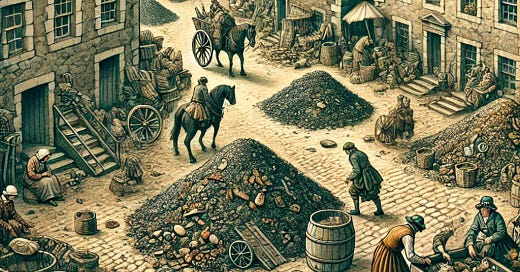Throughout history, the waste a society produces can reveal fascinating details about its daily life, values, and challenges. In Scotland, one of the most enduring and peculiar aspects of community life from the medieval period through the 19th century was the midden—a term for a refuse heap that was far more than just a pile of garbage. Middens were a ubiquitous presence, appearing in the courtyards of homes, the edges of fields, and the streets of bustling towns. They weren’t just seen as trash heaps but as necessary, even pragmatic, fixtures of life. These piles contained everything from food scraps and animal bones to broken pottery and ash, offering a snapshot of what Scottish households consumed and discarded. Beyond their practical role, middens became symbols of resilience and adaptation in a time when organized waste management was nonexistent.
Keep reading with a 7-day free trial
Subscribe to Tales of Forgotten Scottish History to keep reading this post and get 7 days of free access to the full post archives.




